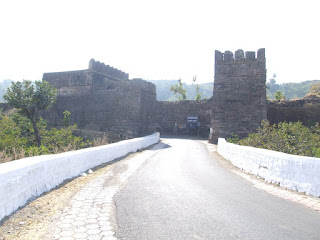These verses attributed to Rani Rupmati are taken from "The lady of the Lotus" by Ahmad-ul-Umri and translated into English by L. M. Crump
This verse talks about the wisdom of using one's wealth:
Some men good fortune turns to evil ways
Other retain the good of simple days.
Some give and win more than the gift has cost
To others gifts are so much money lost.
some use their wealth for ends both wise and just;
And others only to indulge their lust.
Wealth may thus praises earn beyond all words
Or be less worth than yesterday's stale curds.
And here' s something quite radical for a royal lady of the 15th century!
Some men are liars:
Some men are true:
Some pay their debts:
Some never do:
Some wives wear the dhoti*:
Some husbands skirts wear:
Some twirl their moustaches,
And some never dare.
* the dhoti is a traditional Indian dress worn by males
 through its imposing gates and you realise you are about to unlock history!
through its imposing gates and you realise you are about to unlock history!
 Bhangi Gate
Bhangi Gate










































